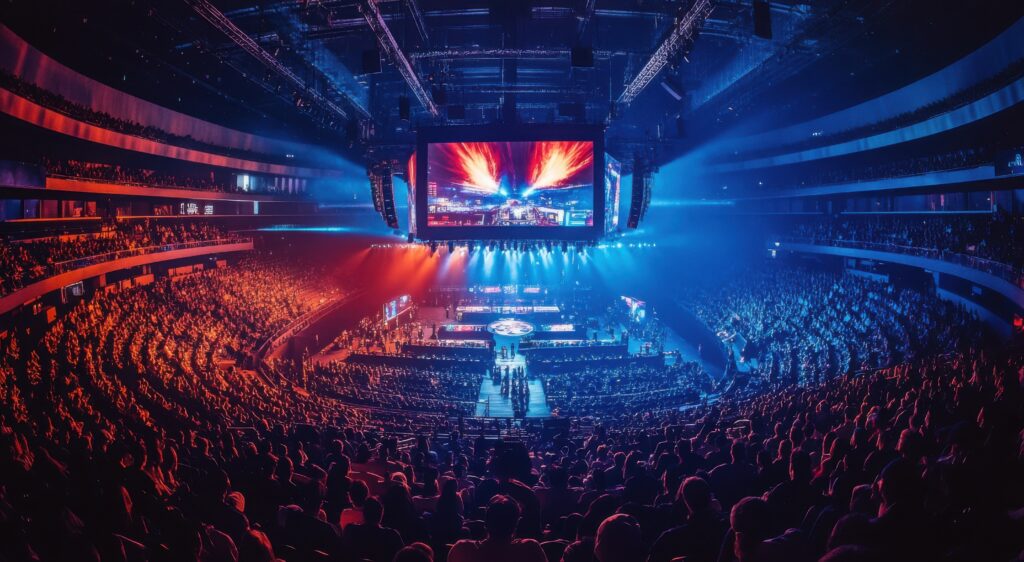2019 Promises a Next-Level World Series Viewing Experience
In recent years, media and entertainment has seen exciting and revolutionary developments: higher resolutions, groundbreaking special effects, more versatile and dynamic camera technology.
For those interested in the industry, there’s no better showcase of these breakthroughs than the World Series, and on October 22, baseball fans across the country—even around the world—will once again tune in to see who will take home the title in 2019 and get to witness these groundbreaking changes.
When it comes to producing and broadcasting live sports, particularly an event with the viewership of the World Series, expectations and stakes are extremely high. Each year teams, broadcasters, and sports leagues look for ways to up the ante and provide the most riveting and entertaining experiences possible for fans at the stadium, and at home.
Recently Fox announced that it would broadcast the American League Championship Series in full 4K HDR for the first time ever, available through the FOX Sports and FOX NOW apps as well as several FOX Sports distributors. For the World Series, their devotion to “the intersection of art and science” sounds even more ambitious than ever.
In addition to the basic 4K HDR, Fox also announced that—in coordination with Sony Broadcast—it would bring a Sony 8K HDR camera to select World Series games. Additionally, “dirt cams” will provide a “snails-eye” view of the field to help bring additional angles, while FlyCams will offer a bird’s-eye view of the field. On top of this, more than 30 cameras will surround home plate so that Fox can create what they call a “4D Replay” with up-to-the-minute, animation of exciting moments at the plate.
It’s not just Fox that’s looking to provide viewers with the best experience possible! In 2018, ESPN deployed a similar 4D Replay at the Homerun Derby, mounting 60 4K cameras on the concourse level behind the plate, and running all the way from first to third base! TBS, too, has invested in the 4D Replay boom.
The World Series Has a Rich Media History
The way in which the baseball World Series is broadcast and consumed is ever-evolving. It wasn’t till the legendary game six of the 1975 World Series—and Carlton Fisk’s unforgettable home run—that we got the World Series viewing experience that we’re so used to today; but twelve years later, the game was still recorded using only 12 cameras.
As time has gone on, the World Series has consistently drawn tens of millions of viewers, (including an incredible 40 million viewers for 2016’s Game 7) and in 2017 the network brought 121 microphones and 41 cameras, almost quadrupling the camera coverage from 30 years prior.
In addition to a larger camera presence, broadcasters are increasingly dedicated to investing in the most advanced technology available. For instance, at the outset of 2018, TV Technology announced that MLB’s three central mobile unit providers would be deploying cameras with Super Slo-Mo (SSM) capabilities for the upcoming season.
Decisions like this are in part due to an ever-changing and ever-more-competitive media landscape, wherein an increased number of viewing options (including streaming devices and mobile apps) have made viewers increasingly picky about how and when they consume their media. Especially for viewers who have moved away from traditional TV viewing, the benefits of such technologies provide a huge hook.
Moreover, in a piece comparing viewership between the 2018 and 2017 World Series, Variety interestingly observes that while 2018 saw a 23% decline in average viewership (though the magazine allows that the 2017 Series lasting two games longer complicates things) Game 5 of the 2018 Series was the fourth most streamed game in World Series history on Fox Sports streaming platforms, and—as a result—the overall average-minute audience rose by 9% from the prior year.
When average-minute audiences and streaming platforms have so much sway over viewership, leveraging technology that helps closely capture and swiftly transmit the most exciting moments with the best accuracy is essential to holding viewer attention. MLB needs to ensure consistent engaged viewership, and new and innovative technologies such as those previously mentioned are vital for this.
Sports Broadcasting is More Dynamic Than Ever Before
With the addition of higher quality cameras and more detailed graphics, broadcasters immerse viewers around the world in the sport they love, allowing them to feel like super fans, umpires, and players, all at once. While many of the most talked about advances in media technology seemed confined to the big screen, sports media has been consistently innovating and dictating the expectations of millions of consumers—providing real-time experiences that are just as lush, detailed, and dynamic as any superhero blockbuster.


